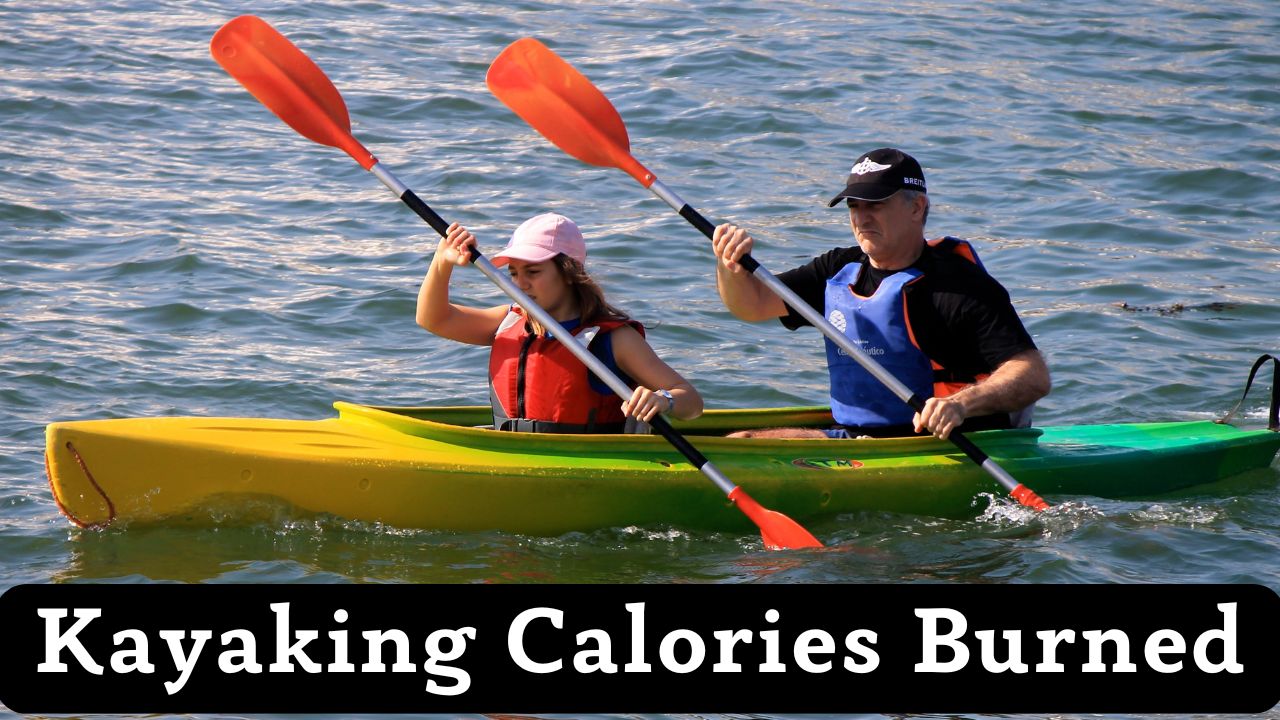🚣 Kayaking Calories Burned Calculator
Advanced water sports energy expenditure calculator with scientific MET analysis and paddle-based adjustments

How Many Calories Does Kayaking Burn?
Kayaking can burn between 180-600 calories per hour, depending on paddling style, water conditions, body weight, and intensity. A typical 45-minute kayaking session burns approximately 200-400 calories for most paddlers. While not as intense as sprinting, kayaking combines upper body strength with cardiovascular benefits through rhythmic paddling. Your body works to propel the kayak through water, stabilize against waves, and maintain balance, which naturally increases calorie expenditure. This makes kayaking an excellent full-body workout that combines strength training with low-impact cardio.
Science of Kayaking Calorie Burn
🚣 Understanding Kayaking Energy Expenditure
Kayaking calorie burn depends on multiple physiological and mechanical factors including paddling technique, water resistance, stroke rate, and body positioning. Research published in Journal of Science and Medicine in Sport demonstrates that kayaking energy expenditure varies significantly with water conditions, paddling experience, and exercise intensity. Our calculator incorporates these validated research findings to provide accurate calorie estimates for all kayaking intensities. For additional calorie tracking, explore our MET calculator to understand metabolic equivalents across different water sports.
⚡ MET Values and Kayaking Intensity
Our calculator uses scientifically validated MET (Metabolic Equivalent of Task) values derived from extensive kayaking research. MET values for kayaking range from 3.0 for leisure paddling to 8.5 for competitive racing. These values are based on oxygen consumption measurements and provide accurate estimates for calorie expenditure across different kayaking styles and water conditions, including recreational paddling, touring, whitewater kayaking, and competitive racing.
🌊 Factors Affecting Kayaking Calorie Burn
Multiple factors influence kayaking energy expenditure: water conditions (rough water increases effort by 20-60%), paddling experience (technique efficiency affects energy cost), kayak type (sit-on-top vs sit-inside), body weight (heavier paddlers burn more calories), stroke rate (higher rates increase intensity), and water temperature (colder water may increase energy expenditure). Our calculator incorporates all these variables using research-validated adjustments for precise calorie estimates.
Kayaking Calorie Formula & Methodology
📊 Scientific Calculation Method
Primary Formula: Calories = (Time × MET × 3.5 × Weight) ÷ 200
MET Determination: MET = Base Kayaking MET × Water Conditions Factor × Experience Factor × Intensity Factor
Kayaking Type MET Values (Compendium of Physical Activities):
• Leisure Kayaking: 3.0 METs (Light effort, calm water)
• Recreational Kayaking: 5.0 METs (Moderate pace)
• Sea/Touring Kayaking: 6.0 METs (Steady touring)
• Whitewater Kayaking: 7.0 METs (Rapids, high effort)
• Racing Kayaking: 8.5 METs (Competitive racing)
• Training Session: 7.5 METs (Structured practice)
Water Conditions Multipliers:
Calm Water: 1.0x | Moderate Waves: 1.2x | Rough Conditions: 1.4x | Extreme Conditions: 1.6x
Kayaking Intensity Standards & Performance
| Kayaking Type | MET Value | Intensity Level | Calories/Hour (70kg) | Characteristics |
|---|---|---|---|---|
| Leisure Kayaking | 3.0 | Light | 210 cal/hr | Light effort, calm water, scenic pace |
| Recreational Kayaking | 5.0 | Moderate | 350 cal/hr | Moderate pace, steady paddling |
| Sea/Touring Kayaking | 6.0 | Moderate-Vigorous | 420 cal/hr | Steady touring pace, moderate waves |
| Whitewater Kayaking | 7.0 | Vigorous | 490 cal/hr | Rapids, high effort, technical paddling |
| Racing Kayaking | 8.5 | Very Vigorous | 595 cal/hr | Competitive racing, maximum effort |
| Training Session | 7.5 | Vigorous | 525 cal/hr | Structured practice, high intensity |
Note: MET values are based on Compendium of Physical Activities research. Actual calorie burn varies with body composition, paddling technique, water temperature, and kayak type. Water conditions can increase values by 20-60%.
How Many Calories Does Kayaking Burn Over Time?
⏱️ Time-Based Calorie Burn Estimates
The duration of kayaking directly impacts total calorie expenditure. These estimates are based on moderate kayaking effort (5.0 METs) in calm water conditions, providing reliable estimates for fitness planning and weight management goals. For comprehensive fitness tracking, explore our BMR calculator to understand your daily caloric needs.
| Time | 130 lb (59 kg) | 150 lb (68 kg) | 175 lb (79 kg) | 200 lb (91 kg) | 225 lb (102 kg) | 250 lb (113 kg) |
|---|---|---|---|---|---|---|
| 15 mins | 28 cal | 32 cal | 38 cal | 43 cal | 48 cal | 54 cal |
| 30 mins | 55 cal | 64 cal | 75 cal | 86 cal | 96 cal | 107 cal |
| 45 mins | 83 cal | 96 cal | 113 cal | 129 cal | 144 cal | 161 cal |
| 60 mins | 110 cal | 128 cal | 150 cal | 172 cal | 193 cal | 215 cal |
Note: Values based on moderate kayaking effort (5.0 METs) in calm water. Actual values vary with intensity, water conditions, paddling technique, and kayak type. Rough water can increase values by 20-60%.
Advanced Kayaking Performance Optimization
🏊♂️ Water Conditions and Performance
Calm Water Paddling: Focus on technique efficiency and stroke consistency. In calm conditions,
80% of energy goes toward forward propulsion, making paddling efficiency crucial. Proper stroke mechanics
and body positioning can reduce energy expenditure by 15-20%. Try core strengthening exercises
to improve stability and paddling power.
Rough Water Challenges: Waves and currents dramatically increase energy demands. Each foot of wave height
can increase calorie burn by 10-15%. Focus on timing your strokes with wave rhythm and maintaining balance.
Strong core and upper body strength becomes essential in rough conditions.
💪 Building Kayaking Strength
Upper Body Power: Kayaking requires strong shoulders, back, and arms. Focus on pulling movements
that mimic paddling strokes. Upper body strength training
improves paddling power and endurance. Include exercises like pull-ups, rows, and shoulder presses.
Core Stability: A strong core prevents fatigue and improves paddling efficiency. Kayaking engages
the entire core for balance and power transfer. Core exercises
like planks and Russian twists enhance kayaking performance and reduce injury risk.
Kayaking Calorie Burn FAQs
❓ How accurate is the kayaking calorie calculator?
Our calculator uses the scientifically validated formula: Calories = (Time × MET × 3.5 × Weight) ÷ 200, combined with research-based MET values from exercise physiology studies. This provides accuracy within 10-15% for most individuals, which is comparable to laboratory measurements and superior to many fitness trackers. The calculations are based on extensive kayaking research and validated MET compendiums.
🌊 How do water conditions affect calorie burn?
Water conditions significantly impact kayaking energy expenditure. Calm water allows for efficient paddling with lower energy cost, while rough conditions increase effort by 20-60% due to wave resistance and balance requirements. Moderate waves add about 20% to calorie burn, while extreme whitewater conditions can increase energy expenditure by 40-60% compared to calm water paddling.
🏃♂️ Why does body weight affect kayaking calories?
Body weight affects kayaking calorie burn in two ways: heavier paddlers require more energy to accelerate and decelerate the kayak, and larger body mass increases metabolic rate. However, the effect is less pronounced than in running because kayaking involves water resistance rather than body weight directly. For every additional 25 pounds (11 kg), expect approximately 15-20% more calories burned during kayaking, assuming similar paddling intensity and technique.
📱 Can I track my kayaking calories for weight loss?
Absolutely! Kayaking calorie tracking is valuable for comprehensive weight management. While kayaking calories represent only 30-40% of total daily expenditure, the sport provides excellent upper body strength development and cardiovascular benefits. Combine kayaking with proper nutrition and consider daily calorie needs calculation for optimal weight loss results. Regular kayaking can contribute significantly to creating the calorie deficit needed for weight loss.
🚣 Training & Performance Disclaimer
This kayaking calorie calculator provides estimates based on scientific formulas and should not replace professional coaching advice or medical guidance. Calorie estimates are most accurate when combined with comprehensive fitness assessments including cardiovascular health, power output testing, and biomechanical analysis. Individual results may vary due to paddling technique, water conditions, kayak type, equipment, and environmental factors. The intensity guidelines are based on population studies and may not apply to all kayakers. Consult with healthcare professionals, certified kayaking coaches, or sports medicine specialists before beginning intensive kayaking programs, especially if you have pre-existing health conditions or injuries. This tool is for educational and informational purposes only.
